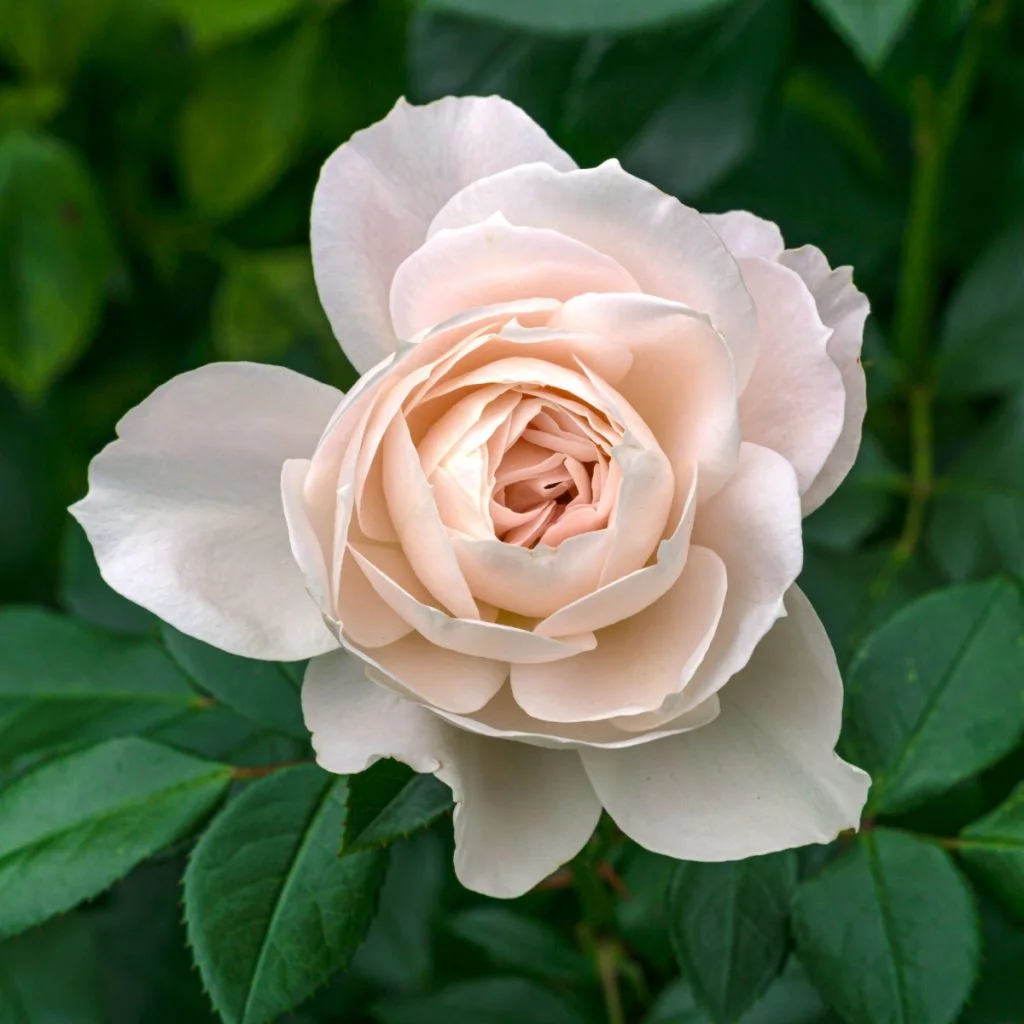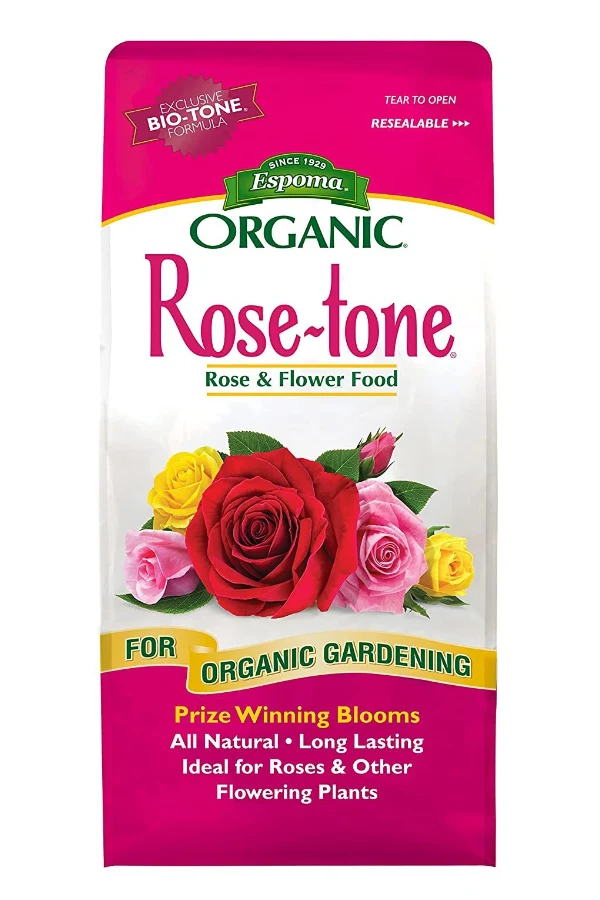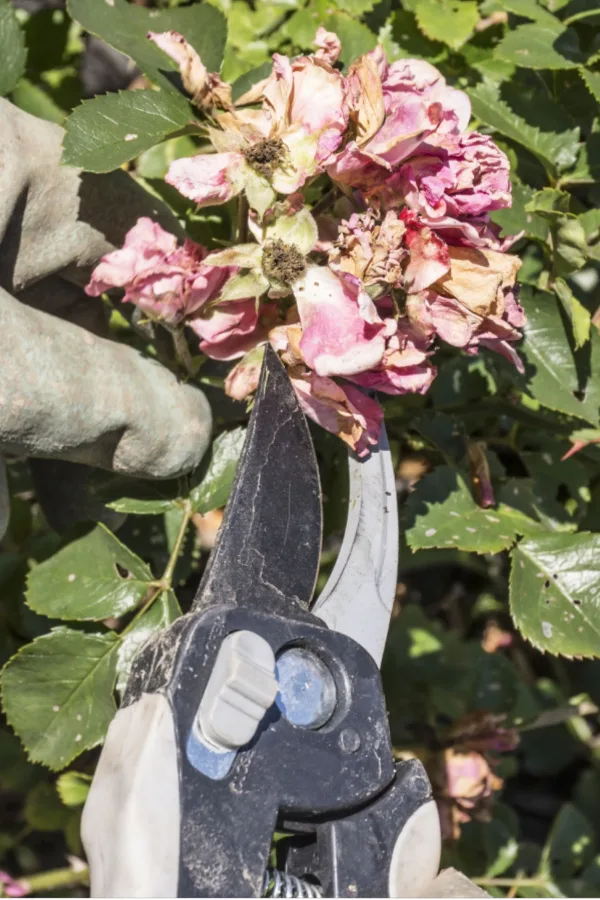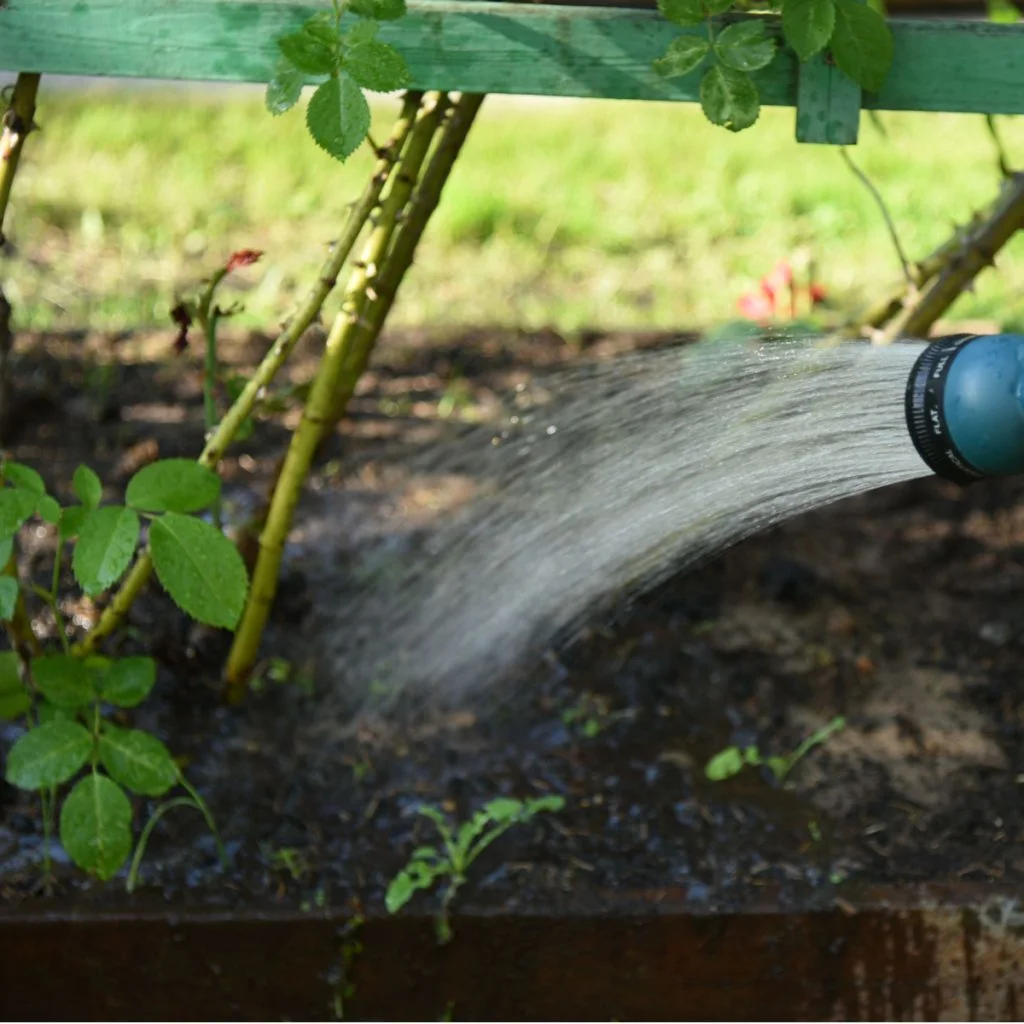If you are looking for a few simple tips and tricks to get your rose bushes blooming more than ever this summer – then make this the year you fertilize and deadhead your roses like a pro!
Rose bushes are wonderful for adding elegance, beauty and interest to the landscape, especially when they are loaded with buds and blooms. But for many gardeners, keeping their rose bushes healthy and flowering strong can be challenging.
Weather, pests and disease and fungal issues can certainly all affect a rose bush’s performance. But more often than not, the reason a rose bush struggles to bloom and rebloom comes down to 2 simple and very controllable aspects of care – fertilizing and removing old blooms. The good news is that all both are not only simple to do, but also take little time to perform!

How To Fertilize & Deadhead Rose Bushes Like A Pro
The Importance Of Fertilizing
Plain and simple – rose bushes need energy and nutrients to bloom. And that is exactly why fertilizing is a must.
Because rose bushes require a tremendous amount of nutrients from the soil to bloom, they can often deplete the resources they need over time. Especially if your roses have been growing in the same location for multiple years. Fertilizing plays a huge role in getting the plant to produce additional blooms and flowers. It does this by replacing the energy the plant lost from its previous blooming cycle.
Unlike shrub and climbing roses that can be fertilized in the spring, more traditional roses such as Tea roses, Grandiflora, Floribunda and miniature roses all require more frequent energy boosts to power blooms. For these roses, you should be fertilizing every 3 to 4 weeks throughout the spring and summer.
The Best Fertilizers For Rose Bushes
There are several great options for powering your roses. Organically speaking, compost tea and worm casting tea are two of the best liquid fertilizing options. They tend to be less potent, so if using these options, fertilize every two weeks. See: An Easy Way To Make Compost Tea – How To Fertilize Plants Naturally With Perfect Power!

If you are looking for a commercial granular fertilizer option, it’s best to select a product specifically designed for roses. Rose Tone is one of our favorites for this. It has just a bit more nitrogen, which roses love, but not too much to overpower the bush. Product Affiliate Link: Espoma Organic Rose-Tone 4-3-2 Organic Fertilizer
This should be applied every three to four weeks to keep your roses full of energy. In addition to regular fertilizer feedings, spent coffee grounds can be a secret weapon for powering more blooms. Spent coffee grounds contain nitrogen along with other trace minerals that are highly beneficial to roses. Simply scatter three to four tablespoons of spent grounds once a month around each rose bush.
Deadheading Roses – Why It’s Just As Important As Fertilizing!
If there is one big mistake many rose growers make with their roses, it’s not removing old, decaying blooms quickly. By leaving old blooms in place, it can slow down and even stop the bush from blooming more. Even if you are giving your roses the perfect amount of fertilizer!
Deadheading, which is the practice of removing dying or dead blooms from a plant, is important for better blooming for many annuals and perennials. But it’s even more important than ever for rose bushes and their ability to bloom more.
When rose blooms are allowed to stay on the bush beyond their prime, it causes the plant to burn valuable energy. Energy that should be going to creating new blooms.

As long as old blooms remain attached to the plant, they continue to use and burn nutrients. The bush will continue to send additional power to the fading bloom in hopes of repairing it.
Unfortunately, no amount of energy will ever fix a dying bloom – so the effort simply wastes resources and takes energy away from the bush. And for a rose bush, that loss of power is critical when it comes to trying to create new blooms.
How To Remove Spent Blooms From A Rose Bush
To remove a dying bloom correctly from a rose bush, cut the bloom off right below where it attaches to the main stem or branch. This will stop any and all energy the plant is burning to try to heal the old bloom. Once that occurs, the plant will then refocus on producing new blooms.
You can also lightly prune rose bushes during the summer months. This helps keep the plant in shape, and allows it more energy for blooming by removing excess stems and foliage. As with any plant, also take time to cut and remove any damaged leaves or stems – or any that show early signs of black spot, rust or other disease and mold issues.

Fall Deadheading
As Autumn settles in, about three to four weeks before your typical first fall frost date, you will want to stop deadheading any spent blooms from your rose bush.
This will actually help protect the bush and prepare it for the upcoming winter. By allowing the roses to remain on the plant in the fall, it forces the plant to start heading into dormancy instead of trying to still create more new blooms.
Unfortunately, deadheading too late in the season leaves the plant vulnerable to winter damage. Deadheading will make the plant try to keep producing new stems and blooms. Not only is that new tender growth highly susceptible to freezing out, it also takes energy away from the plant it needs for winter.
Don’t Forget The Water
Beyond taking the time to deadhead and fertilize rose bushes, they also need and use water to keep their stems and foliage healthy. But more importantly, they also need water to produce buds and blooms.
Without enough moisture in the soil during the hot and dry summer months, they will start to slow bloom production. And if they get dry enough, they will stop it altogether.
For proper health and flower production, your roses need to be getting one to two inches of water per week. If you are not getting that in rainfall, hand watering is a must.

Water slowly so that it can soak down into the soil eight to twelve inches deep. Unfortunately, when you dump a half-gallon or a full gallon of water on your plant all at once, most of it will run off and away from the root zone. But by watering slowly and intermittently, it can soak down in.
Don’t Water From Above
One thing you don’t want to do is water your rose bushes from overhead. When water hits and remains on foliage and blooms, it can leave the plants more susceptible to disease and mold. Spraying from overhead can also knock off future buds and young blooms.
Instead, water low at the base of your bush. With roses, it is better to water less frequently, but with deeper watering rather than daily shallow watering. Watering every day will keep roots near the surface, and not get them to drive deeper where they are more protected and have more nutrients to power them.
Here is taking the time this year to fertilize and deadhead your rose bushes on a regular basis. And – to getting more blooms than ever!
This Is My Garden
Follow Our Facebook Page For Great Gardening Tips And Advice! This Is My Garden Facebook Page
This Is My Garden is a garden website created by gardeners, for gardeners. Jim and Mary Competti have been writing gardening, DIY and recipe articles and books and speaking for over 15 years from their 46 acre Ohio farm. They publish three articles every week, 52 weeks a year. Sign up today to follow via email, or follow along!
